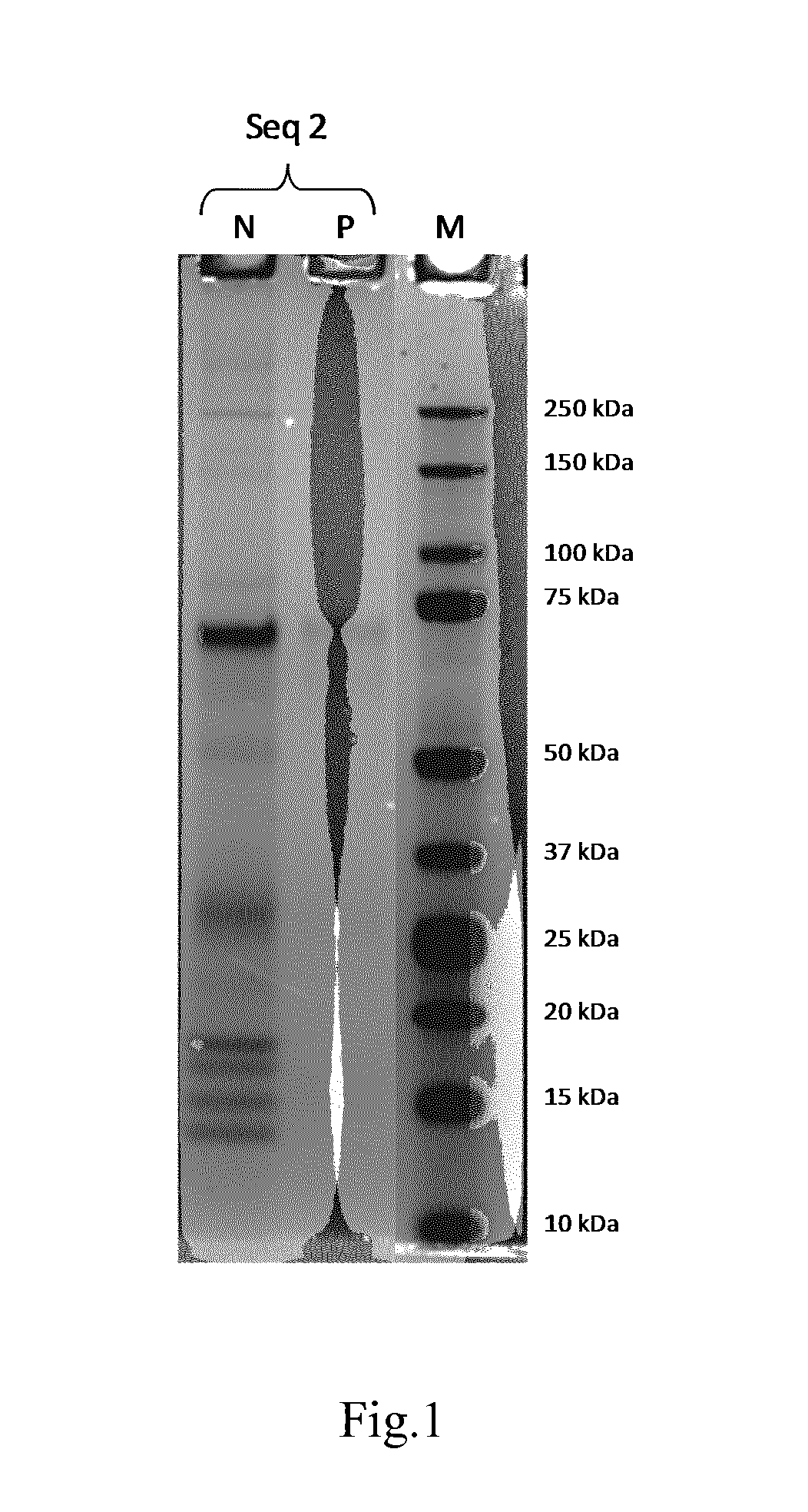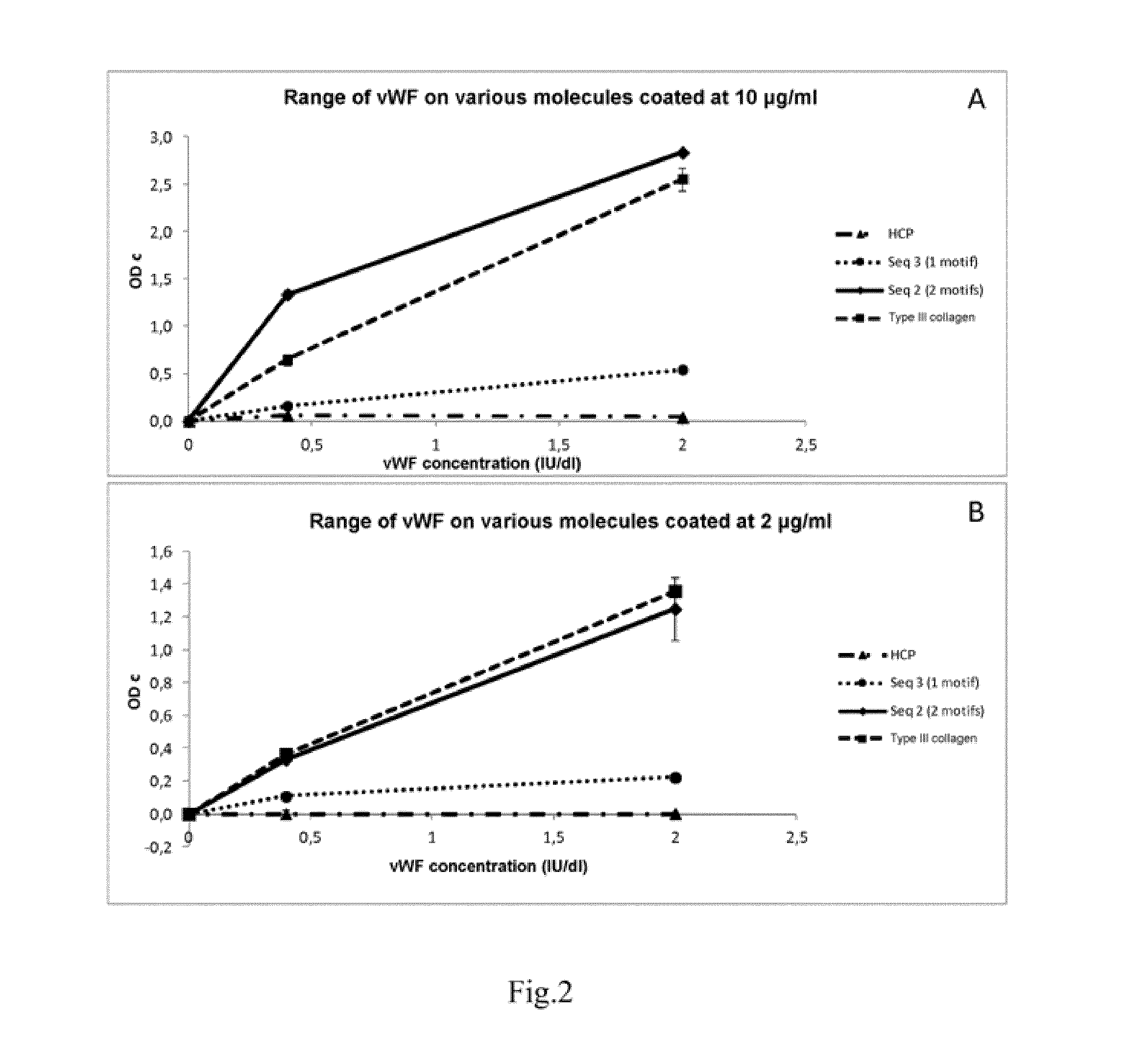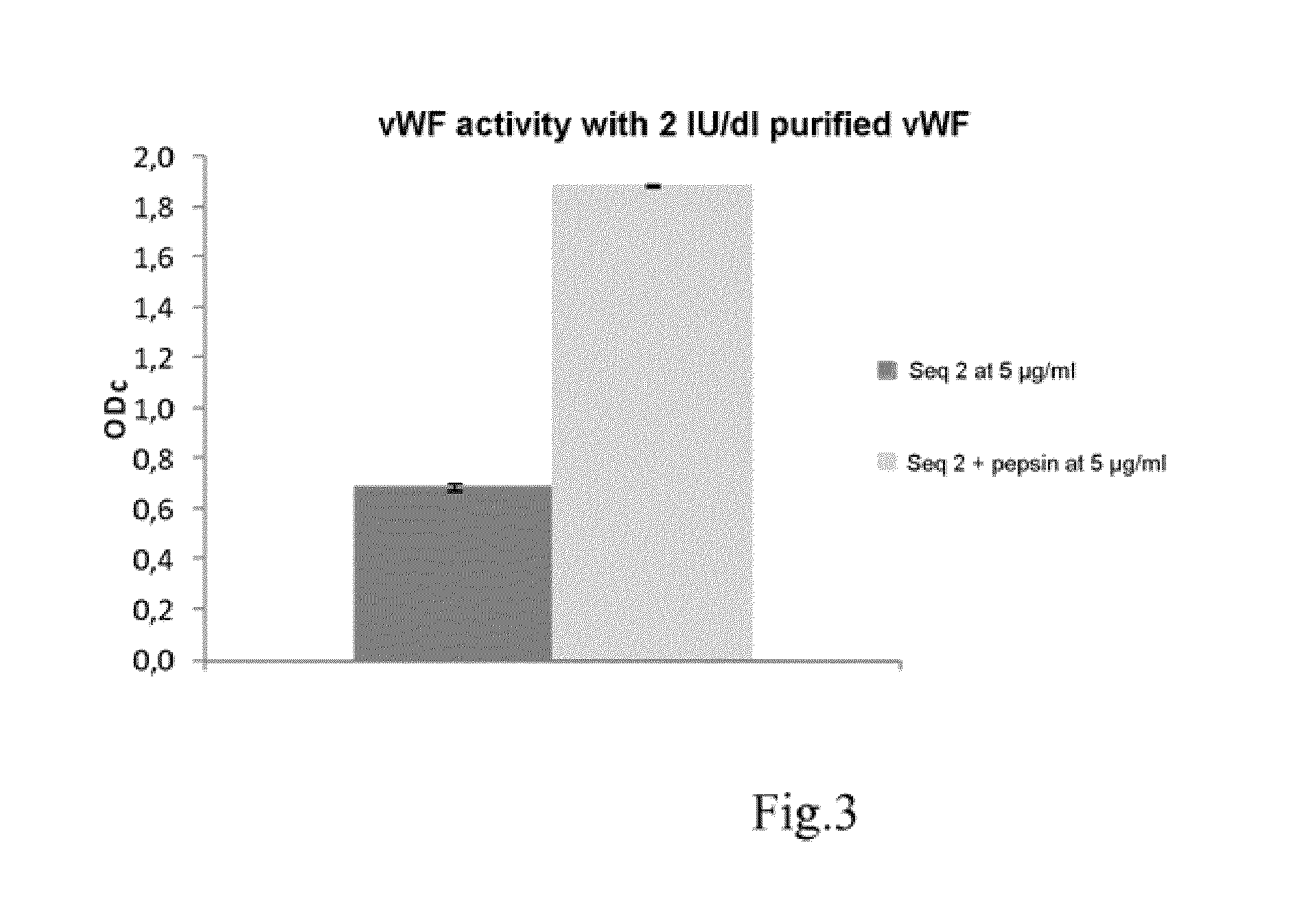Collagen-Derived Recombinant Proteins with Von Willebrand Factor-Binding Activity
a recombinant protein and collagen-binding technology, which is applied in the field of collagen-derived recombinant proteins with von willebrand factorbinding activity, can solve the problems of not being able to quantify von willebrand factor activity, not being able to routinely use collagen-binding, and complicating the comparison of results between the various studies
- Summary
- Abstract
- Description
- Claims
- Application Information
AI Technical Summary
Benefits of technology
Problems solved by technology
Method used
Image
Examples
example 1
Construction of the Vector Encoding the Polypeptide According to the Invention Containing a 6×His Tag
[0189]The nucleotide sequence encoding the polypeptides according to the invention comes from the vector pUC57-NVH020B containing type III collagen signal peptide (position 1 to 23 of the nucleotide sequence of the polypeptide according to the invention). This sequence is inserted in an expression vector dedicated to mammalian cells: pcDNA3.1+(Invitrogen). This vector contains, inter alia, the following elements:[0190]A CMV promoter,[0191]A multiple cloning site for inserting the nucleotide sequence of interest,[0192]A geneticin resistance cassette for expression in mammalian cells,[0193]An ampicillin resistance cassette for expression in bacteria.
[0194]To allow insertion of the polypeptide according to the invention, restriction sites were inserted on each side of the nucleotide sequence. These are the 5′ NheI restriction site and the 3′ BamHI restriction site. To facilitate purific...
example 2
Expression in CHO Cells of the Fusion Protein According to the Invention
[0196]CHO-S cells (Invitrogen) are pre-cultured for 3 weeks prior to transfection. The cells are maintained in dedicated CHO cell medium (Power-CHO, EXCEL 302, proCHO4, proCHO5, etc.) supplemented with 4 mM L-glutamine (Lonza) and 1×proHT (Lonza) in a 125 ml shake flask and shaken (80 rpm) in an incubator at 37° C. with 5% CO2. Two days before transfection, the cells increased to 5×10′ viable cells / ml by a complete change of the medium used and grown in 12.5 ml of complete dedicated CHO cell medium in a 125 ml shake flask.
[0197]The day of transfection, 5×106 viable cells are pelleted by centrifugation (5 min at 1000 g), then taken up in 5 ml of RPMI medium (Lonza) supplemented with 4 mM L-glutamine (Lonza) and 1×ProHT (Lonza). Four ml of suspension is then distributed in four 25 ml shake flasks (1 ml per flask) containing 9 ml of complete RPMI medium (1×106 viable cells per shake flask). The CHO-S cells are then...
example 3
Production in CHO Cells of the Fusion Protein According to the Invention
[0200]Cells modified genetically to produce the polypeptide according to the invention are thawed and maintained in a suitable medium. The cells are maintained at 3×105 viable cells / ml for one or two weeks. The cells are placed in 12.5 ml of final medium in a 125 ml shake flask in a Kühner Lab-Therm® shaker with shaking at 80 rpm, set to 5% CO2 and with humidity between 40 and 80%. Next, the cells are amplified in order to have the quantity necessary to carry out production. Amplification consists in maintaining the cells in greater volumes at each maintenance step in order to keep all the cells at a viable concentration.
[0201]When the quantity of cells needed for production is obtained, production may be started. The cells are inoculated at 3×105 viable cells / ml. Production may be carried out in various types of equipment: shake flask placed in a Kühner Lab-Therm® shaker, Cultibag RM 20 / 50® (Sartorius), CellRea...
PUM
| Property | Measurement | Unit |
|---|---|---|
| Flow rate | aaaaa | aaaaa |
Abstract
Description
Claims
Application Information
 Login to View More
Login to View More - R&D
- Intellectual Property
- Life Sciences
- Materials
- Tech Scout
- Unparalleled Data Quality
- Higher Quality Content
- 60% Fewer Hallucinations
Browse by: Latest US Patents, China's latest patents, Technical Efficacy Thesaurus, Application Domain, Technology Topic, Popular Technical Reports.
© 2025 PatSnap. All rights reserved.Legal|Privacy policy|Modern Slavery Act Transparency Statement|Sitemap|About US| Contact US: help@patsnap.com



